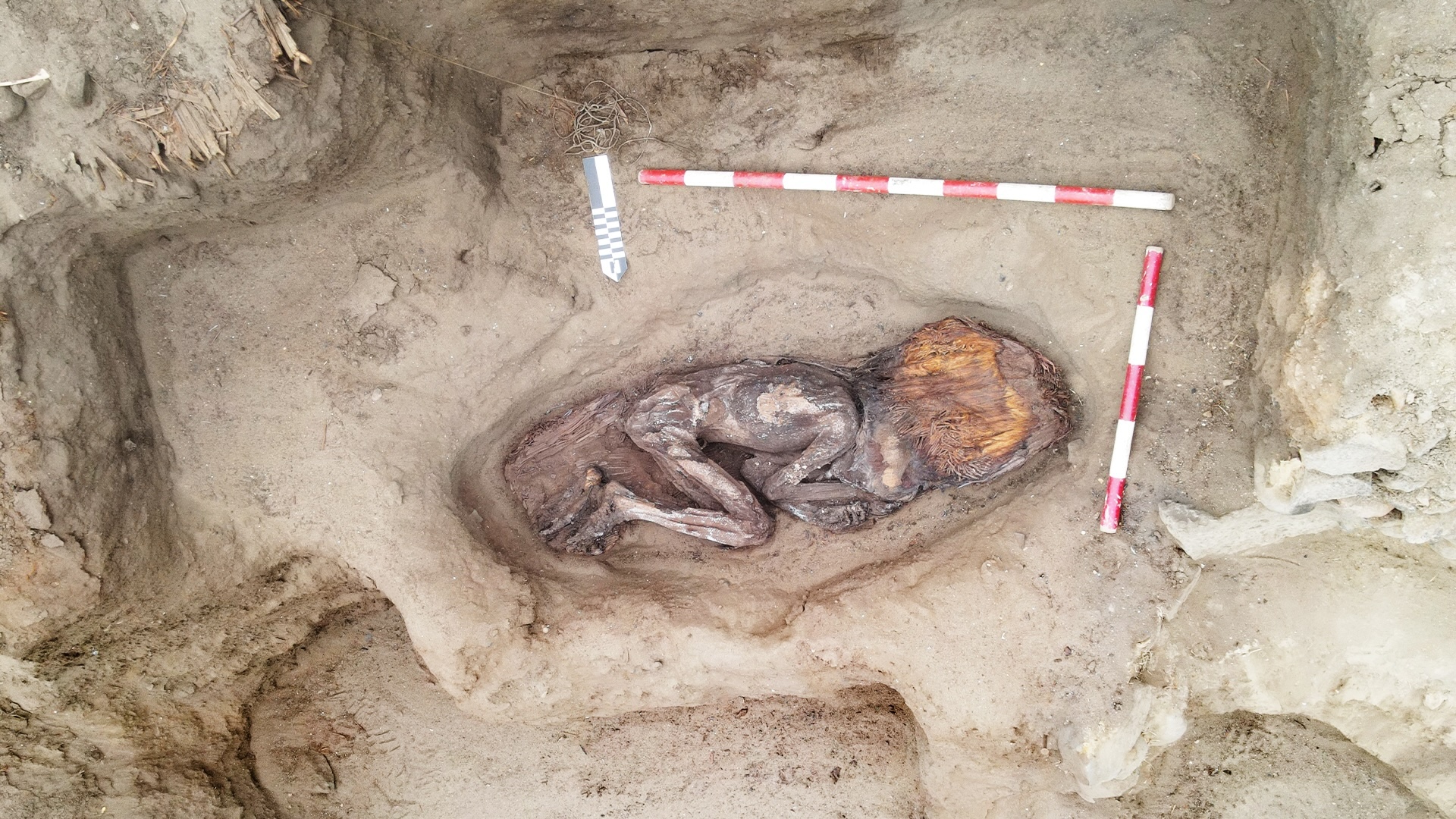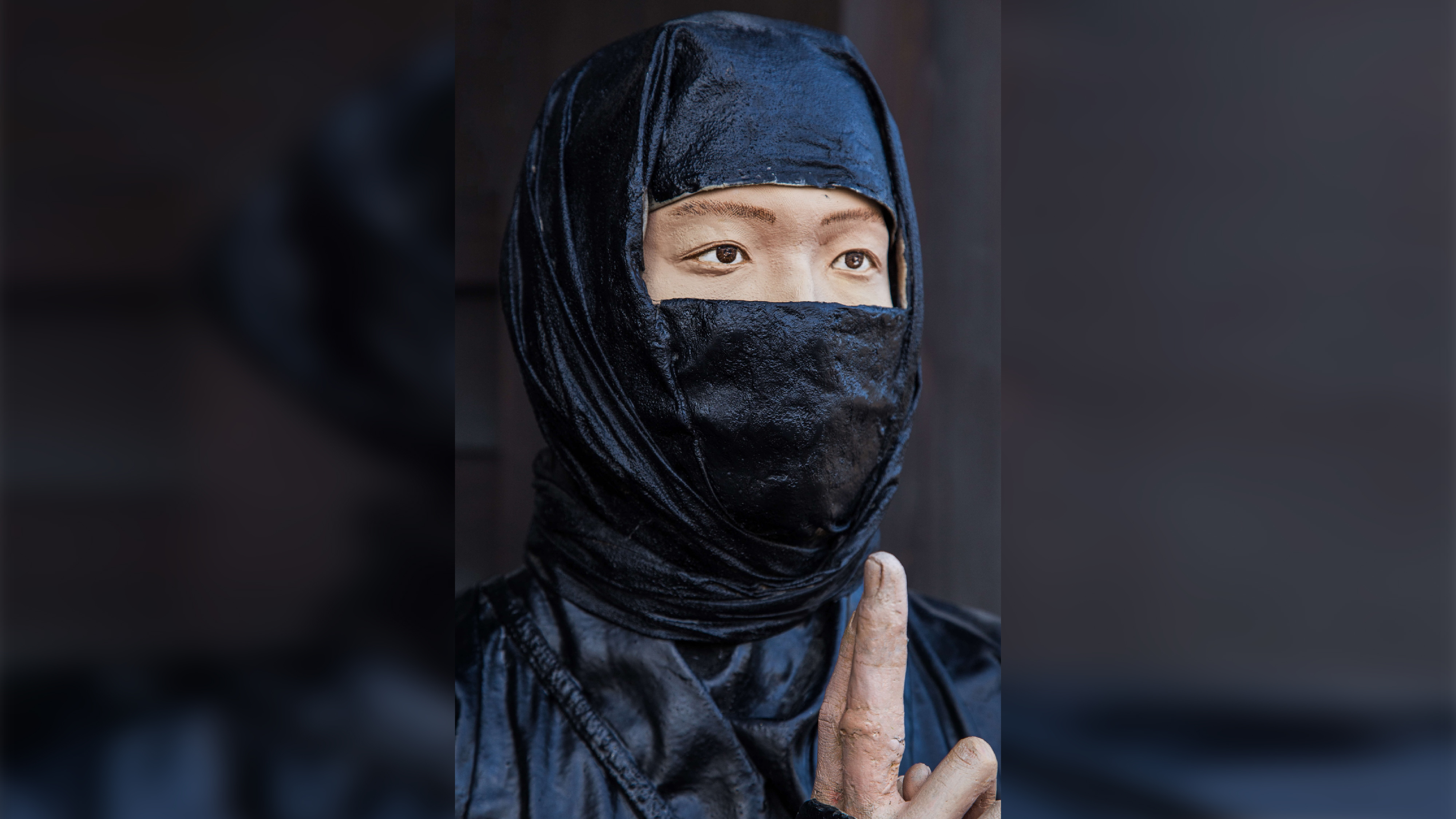Archaeologists in Peru have discovered the burial of an elite woman with remarkable grave goods, including decorative crafts made from a toucan’s beak and macaw feathers.
The woman lived sometime between 3000 and 1800 B.C., and her well-preserved body was found in the ruins of the ancient town of Aspero, which is located in western Peru, about 0.4 miles (0.7 kilometers) from the Pacific Ocean, Peru’s Ministry of Culture said in a translated statement.
Her body was wrapped in a variety of materials, including cotton fabrics, bundles of plant fiber, mats and netting. Her skin, hair and nails were well preserved, which is unusual because human remains in the area usually have only bones, the statement said.
The elite woman died between 20 and 35 years of age and was buried with a variety of grave goods, including a panel embroidered with macaw feathers, a toucan’s beak inlaid with green and brown beads, an Amazonian snail shell, about 30 sweet potatoes and a fishing net.
The woman’s identity is unknown, but she seems to have been someone of a high social rank, the statement said.
She lived at a time when a culture known as the Caral civilization flourished in the area. It was known for its sizable towns and cities and is named after the archaeological site of Caral (also known as the sacred city of Caral-Supe), a 1,300-acre (526 hectares) city that contained pyramids and temples, UNESCO notes. The Caral civilization brought urban life to the region on a scale that it had not had before.
During the time that Caral civilization thrived, and when this woman would have lived, the town of Aspero had at least 22 architectural complexes, and its people appear to have been involved in fishing and trade, the statement said.
Archaeologists noted that it seems that women who lived in this civilization could attain high social rank. In 2016, archaeologists at Aspero found the remains of a woman buried with a variety of grave goods, including four brooches that were carved into the shapes of birds and monkeys. She is now called the “Lady of Four Tupus”; “tupu” is a Quechua word for brooch, and archaeologists think she was also an elite individual because of the items buried with her. (Today the Quechua can be found around the world with large numbers living in either Peru, Bolivia, Ecuador, Chile, Colombia or Argentina.)
The Caral civilization didn’t have a known writing system, so scholars don’t know the names or titles that people held. Therefore, they must rely on archaeological finds to determine how the people lived. Scholars also don’t know the historical names of Caral and Aspero.
Archaeologists are now analyzing the woman’s body and grave goods to find out more about her health, what she ate and how she died. Excavations at Aspero have been ongoing for 20 years, and more finds will likely be made in the future.
















